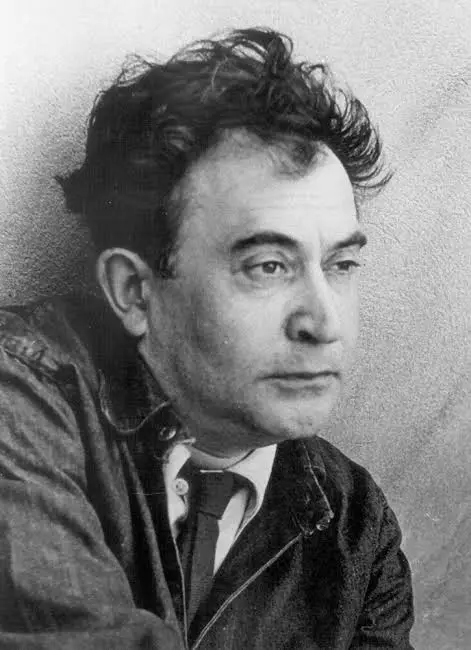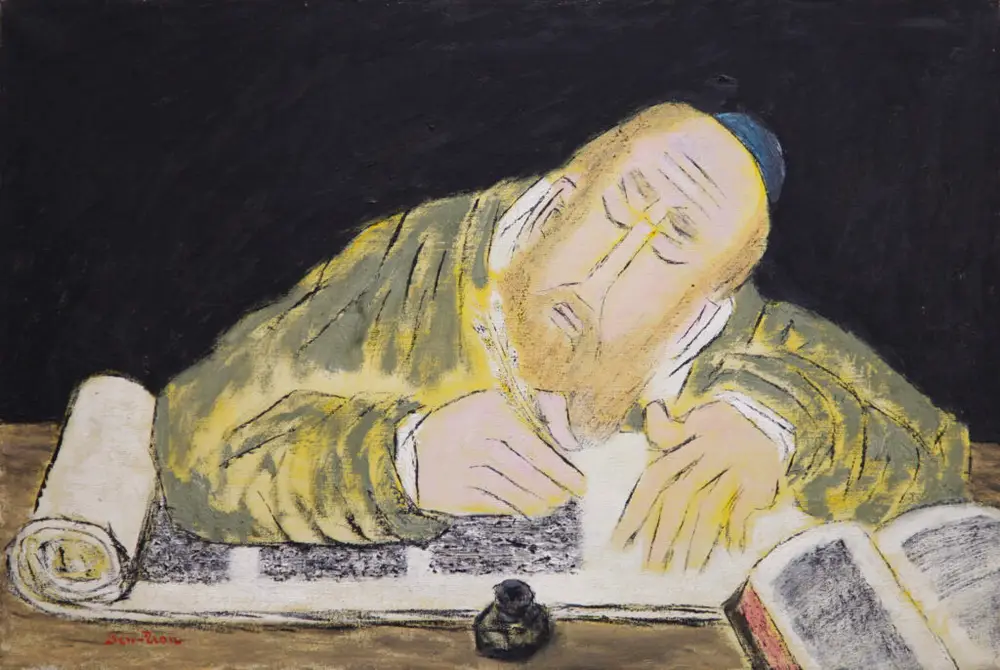Ben-Zion (1897-1987)
Ben-Zion was born in 1897 in Stary Constantin, Ukraine. His father, Hirsh Weinman, a cantor,
emigrated to Tarnopol where he served as chazan in the main synagogue until 1909, and then
to Tarnov where he was cantor in the largest synagogue in Galicia.
As a boy Ben-Zion studied in a yeshiva and with private teachers. He began to write poetry in
Hebrew and showed an inclination to draw pictures, activities which his father discouraged.
During the First World War, while the family were refugees in Vienna, he briefly attended the
Art Academy but left because of the anti-Semitic attitude, as well as the rigid academic
environment.
After the death of his father in 1920, Ben-Zion emigrated to the United States. By then his
character and philosophy were already deeply formed by his early immersion in poetry, art, and
an intrinsic power of observation.
In 1921 Ben-Zion joined a group of Hebrew and Yiddish writers in New York, and together with
the group published his first drama, poems and fairy tales in Hebrew, while supporting himself
by giving private Hebrew lessons. Witnessing the rise of Nazism in the 1930s, he despaired of
language and could not continue to write.
He turned again to his early dream of drawing and painting, and for the next six decades moved
seamlessly between mediums—sharpened twigs dipped in ink—echoing the process of writing,
oil on wood and canvas, etchings on copper plates, and iron sculpture. His prolific body of work
weaves a thematically diverse narrative. Ben-Zion responded to the social upheavals of his time
with canvases such as Lynching, The Glory of War, and De Profundis—works which he said
sought “to get order out of chaos, and rescue images from oblivion.” His intimacy with the
Jewish heritage of his childhood preserved his affinity with the Hebrew Bible, but the deeds of
Gilgamesh and Enkidu, his masks, birds and insects, or Don Quixote of his sculpture stems from
many sources, and from a spiritual affinity to a world that is not exclusively Jewish. His vast
gathering and placement of naturalia, animal and mineral artifacts, pre-historic objets d’art,
clay concretions, as well as countless other stones and figurines, is a backdrop to the perpetual
dialogue with the ancient and antique that is represented in his own work.
In 1935 Ben-Zion was invited to join a group of artists who decided to secede from the
Secession Gallery. Comprised of artists such as Adolph Gottlieb and Mark Rothko, The Ten was
established as a group of independent, expressionist painters who were synonymous in their
opposition to the rigidly academic, provincialist painting of the time. They were committed to
“see objects as though for the first time”.
After The Ten disbanded in the early ‘40s, Ben-Zion moved away from specific references to
contemporary events, turning increasingly toward myths and symbols as a source of inspiration.
He composed works imbued with his deep knowledge of ancient literature, mythology, and
Jewish folklore. His strong feeling toward nature found expression in landscapes of vast fields
and orchards, and in still lifes depicting the stark powerful form of the thistle, and the lush red
of the poppy.
In the following decades Ben-Zion was represented by major New York gallerists such as Curt
Valentin and Bertha Schaefer, and The Jewish Museum, New York, hosted three one-man
shows of his work.
Although Abstract Expressionism dominated the international art scene, Ben-Zion continued to
work in his own style, creating prolifically until his death in 1987.
His work is in major museum and private collections around the world.

